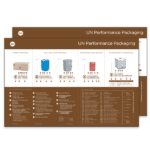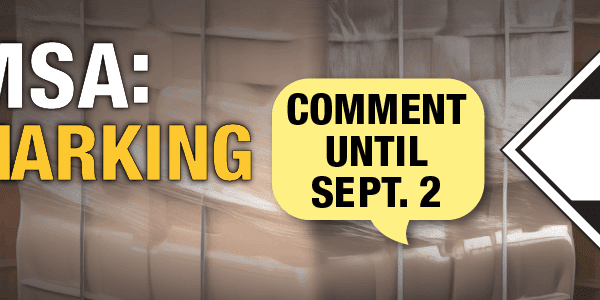
What is the Stacking Test?
Much like the other UN packaging tests, the stacking test is a critical component as it is designed to ensure that containers can withstand the rigors of transporting dangerous goods. This test is designed to simulate the pressure exerted on packages when they are stacked during the transportation of dangerous goods, which is essential for maintaining the integrity of UN rated packaging. By subjecting packaging to this test, manufacturers can identify potential weaknesses or failures that could lead to leaks or spills.
Passing the stacking test not only enhances consumer confidence when shipping dangerous goods in an industry where safety is paramount, but it also is a requirement for UN packaging per the various dangerous goods regulations.
What are the Requirements of the Stacking Test?
During UN packaging testing, three fully assembled sample packages must undergo a stacking test which subjects a force applied to the top surface of each packaging equivalent to the total weight of identical packages that may be stacked on it during transport. This can be done by simply stacking weight on top of the UN packaging, the total weight applied is determined by using a specific formula outlined in the regulations for shipping liquids and solids. This test is required for UN Packaging (other than bags) per the 49CFR at 178.606 and the TP14850 at 7.5. For a packaging to pass, the test samples must not show any deterioration which could adversely affect transportation safety or any distortion likely to reduce its strength and no leakage. So once the testing is complete, if the integrity of the packaging is still intact and none of the contents leak out, it would get a passing grade. Per the 49CFR, the minimum height of the stack, including the test sample, must be 3.0 m (10 feet). The duration of the test lasts for 24 hours, with the exception that plastic drums, jerricans, and composite packaging intended for liquids shall be subjected to the stacking test for a period of 28 days at a temperature of not less than 40 °C (104 °F). Alternatively, both the TP14850 and the 49CFR allow for the use of a dynamic compression testing machine as long as it is capable of applying an end-to-end constant force on the packaging. This test is also a requirement for UN Packaging internationally per IATA if shipping by air at 6.3.6, and the IMDG Code if shipping by sea at 6.1.5.6. In addition, IATA requires limited quantity packaging to be capable of passing a stacking test per 2.7.6 as well as Section IB lithium-ion batteries and lithium metal batteries per packing instructions 965 and 968.
Whether you are looking for UN drums or 4G boxes, rest assured ICC The Compliance Center has plenty of UN packaging that has passed the stacking test. Feel free to visit our website or call us at 1-888-442-9628 for more information. If you have questions about UN Packaging, check out our UN Packaging FAQ or download our Packaging Infographic.
Stay up to date and sign up for our newsletter!
We have all the products, services and training you need to ensure your staff is properly trained and informed.
 Custom CustomPackaging Design |
 UN Approved UN ApprovedPackaging |
 UN Packaging UN PackagingPosters & Charts |





